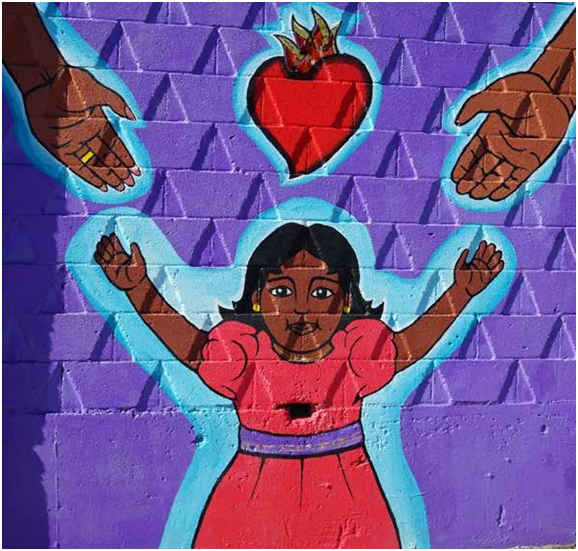By Dr. Ricardo Romo
This year marks the 500th anniversary of the European exploration of the Texas coast. In 1519 the Governor of Jamaica sent Spanish ships to map and explore the coastal areas of the Gulf of Mexico. Their ships sailed along the Texas coastline eventually turning back to- ward the Carribean when they reached Vera Cruz.
Today, nearly a million Latinos live in San Antonio, thus the majority of the city can claim a mixture of Spanish and Mexican Indian back- ground. Upon the initial Europan discovery of the New World, more than 20 million Indians lived in Mexico and Central America. There are no accurate estimates for the number of Texas Indians in pre-European years, but we know this population was sizeable and scattered in every part of the state.
Under New Spain’s governing model, only a few Spaniards, mostly male, immigrated to Mexico. The intermarriage between Spaniards and Indians was swift and by the middle of the 17th century the majority of Mexicans were of Mestizo heritage.
The Spaniards who conquered Mexico and Latin America planned for the Americas to be colonies whereby the natives would labor in the extraction of minerals and production of raw goods to enrich Spain. In less than two centuries, punishing labor, diseases, and warfare claimed the lives of the majority of Indians in Northern Mexico and Texas. John Philip Santos has spent the last quarter century study- ing various aspects of what he terms Mestizaje. He told Elaine Wolff in 2006: “We are all mestizo. Our heri- tage is global. It quarrels with borders; it quarrels with demarcations,” he says, echoing his mentor, Virgilio Elizondo, the San Antonio priest who in 1986 wrote The Future is Mestizo.
The first Tejano immi- grants were Spaniards who landed in Texas with Alvar Nunez Cabeza de Vaca in 1528. I suggest that they became Tejanos by virtue of living with the coastal Indians for an extended time, from 1528-1534. As was often the case among native people and Europeans, hostile Indians or foreigners were captured and enslaved. By numerous accounts, de Vaca lived among the Coahuiltecan Indians, a group which included no less than five different tribes.
In 1534, de Vaca escaped from his enslavement in the middle of the night and luckily came upon friendly Avavares Indians nearby. De Vaca and his companions were hosted by the Avavares until they crossed the Rio Grande and pressed forward in their journey to find their countrymen in the interior of Mexico.
De Vaca was America’s first major ethnographer and historian. In his journal, which he wrote upon his return to Spain, de Vaca referred to his initial capturers as the Mariame and Yguaze tribes.
Historian Donald Chip- man noted: “The world of Texas Indians was irreversibly altered when Spaniards stepped into it in the first de- cade of the sixteen century. Europeans and indigenous cultures began three centuries of sporadic cooperation and conflict.”
In the Aztec capital and surrounding valleys of Mex- ico City, Spaniards found more than enough wealth and productive land to keep them occupied in Central Mexico. More than a 150 years passed before the Spanish Crown sent colonists to settle Texas. This settlement phase was extensive and Spain altered its colonization plan numerous times. The presence of friendly Indians along the San Pedro Creek and San Antonio River convinced the Spanish Crown to establish a presidio and several missions in the re- gion known as San Antonio de Bejar. W.W. Newcomb, an authority on the Texas Indians, noted that San Pedro Springs was a focal point of three or more affiliated Coalhuiltecan bands known as the Payayas.
Don Domingo Teran de los Rios, the first governor of the Spanish province of Texas, kept a detailed diary of his travels and explorations into Texas in 1691. In his notes for June 13-14, 1691, for example, he refers to the discovery of “Arroyo San Antonio de Padua.”
The native people, he not- ed, called themselves Peyaye Indians and lived in what he called “rancherias.” There were hundreds of rancherias in this region. Among them lived the Coahuilteco Indians, who called the San Antonio River Yanaguana. (Pronounced Yanawana). Wana meant water.

In 1716, another military explorer, Spanish Army Cap- tain Don Domingo Ramon, travelled from Coahuila to the Province of Texas and arrived on the banks of San Pedro Creek on May 14. He described San Pedro Springs in an entry in his diary, and then noted the discovery of Salado Creek two days later. Captain Ramon described the region as having “hills, good pasturage, mesquite, and grapes.” Franciscan Friar Isidro Felix de Espinosa, who also travelled with Captain Ramon, added that the San Pedro Creek flowed into the San Antonio River. He commented on the richness of “nopales, poplar, elm, grapevine, black mulberry, strawberry, hemp, and me- dicinal herbs, fish and al- ligators.”
San Antonio was intended to serve as a halfway station for Spanish soldiers and missionaries traveling to East Texas. The French in Loui- siana were determined to lay claim to Texas, and Spain intended to do everything in its power to keep French expansion in check. While Spain kept the French out of Texas, the Spanish missions and presidios in East Texas did not fare well. The Cad- dos and Atakapas Indians resisted living in the mission compounds and with the aid of western weapons acquired from their French neighbors in Louisiana, they forced the Spanish friars to give up on East Texas missions.
Failure in East Texas brought the Franciscans to San Antonio in 1720. The construction of an additional mission on the San Antonio River south of Valero mission (which is the modern day Alamo) began immediately under the supervision of Father Antonio Margil de Jesus. The Payayas aided the Franciscans in the construction of missions and a presidio.
A historical account of this three hundred year period published by the Texas Department of Transportation, places the site for one of the five missions, San Jose Mission, on “the east bank of the San Antonio River about four and half miles distant from Mission San Antonio de Valero.” Many of the local Indians had tired of defending themselves from Apache and Comanche raids and sought refuge inside the gated San Jose Mission compound.
There is little that we know about the first site of Mission San Jose y San Miguel de Aguayo. A study published in honor of the U.S. Bicentennial in 1976 gives us some insight into the second site for San Jose noting: “Sometime between 1724 and 1727, Friars moved the mission to the west bank of the river.” Not stated in the government issued Bi- centennial report was that the Friars at San Jose numbered less than five and without the local Indian population’s assistance, a mission could not have been moved.
The Texas Indian rancherias or communities disappeared by the middle of the 19th century as new settlers from North America claimed vast sections of land. While Indians resisted both Mexican and Anglo intrusions into their lands, they were ill equipped to fight with bow and arrows when western Europeans came with large guns, rifles, and cannons. Driven from their land, many of the Plains Indians moved north to the Indian Territory of Oklahoma. Their story is an American tragedy, much like slavery, and merits more research and study.
Today it is common to find families in southside communities surrounding the missions whose ancestors played an important role in the construction of the missions and chapels of that era. Many can trace their heritage to the first Americans and they are proud of their In- digenous roots and Mestizo culture.









